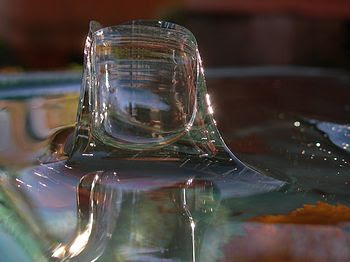On Christmas morning we had visits from a song thrush and a redpoll. Although we have had both species before, we hadn't seen either since the spring.
In the afternoon I went out into the park next to our house on my skis and spotted this treecreeper. Although this one wasn't in our garden, it wasn't far away. We have seen treecreepers here before, but not very often.
 On the 26th we noticed a large thrush-like bird in one of the trees opposite. It made a brief visit to our garden to collect a cotoneaster berry. Viewed through the binoculars, it turned out to be a fieldfare, which is a new record for our garden. I tried to take a photo, but at that moment it took off so this is all I managed to get.
On the 26th we noticed a large thrush-like bird in one of the trees opposite. It made a brief visit to our garden to collect a cotoneaster berry. Viewed through the binoculars, it turned out to be a fieldfare, which is a new record for our garden. I tried to take a photo, but at that moment it took off so this is all I managed to get. In the evening we were just going out for a night walk in the snow when we were astonished to see a pair of mallard ducks approaching our house. They seemed to recognise us when we appeared, and we can only think that they were a pair that visit us in summer and could find no open water in the cold weather. They were certainly very hungry. We have ducks visiting our garden every year, but only between late March and August.
In the evening we were just going out for a night walk in the snow when we were astonished to see a pair of mallard ducks approaching our house. They seemed to recognise us when we appeared, and we can only think that they were a pair that visit us in summer and could find no open water in the cold weather. They were certainly very hungry. We have ducks visiting our garden every year, but only between late March and August. Our complete list of species for Christmas week:
| Blackbird Black-headed gull Bluetit Carrion crow Chaffinch Coal tit Common gull Dunnock Fieldfare Goldfinch Great tit Greenfinch | House sparrow Jackdaw Magpie Mallard Redpoll Robin Rook Siskin Song thrush Starling Wood pigeon |



















